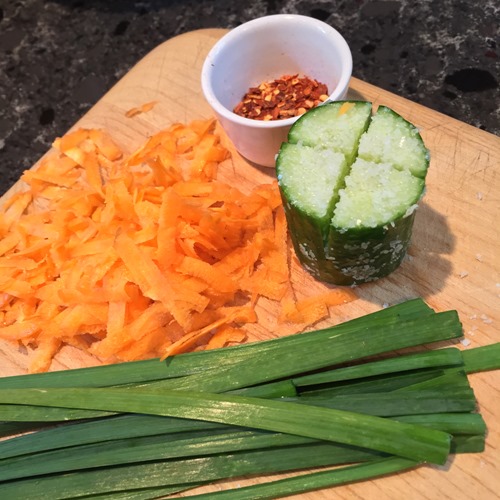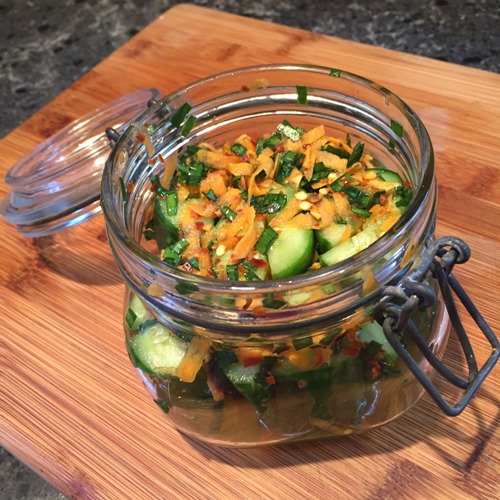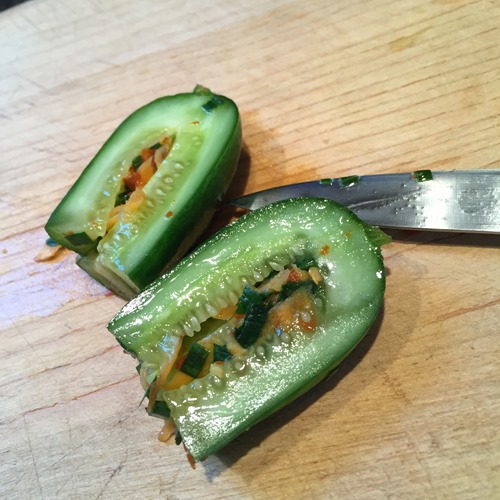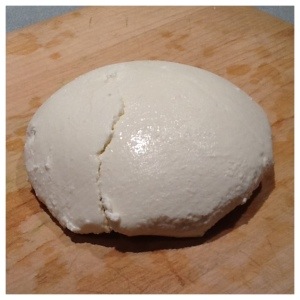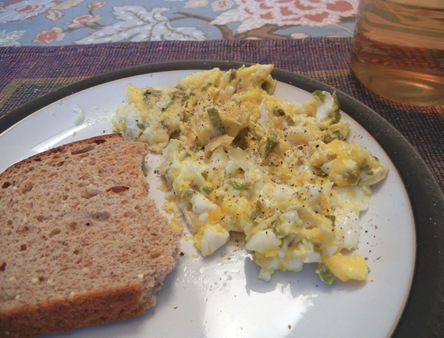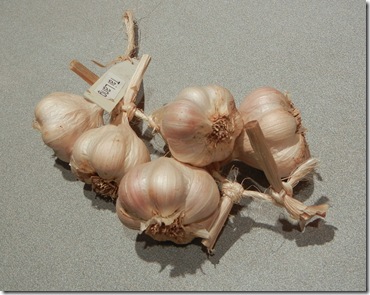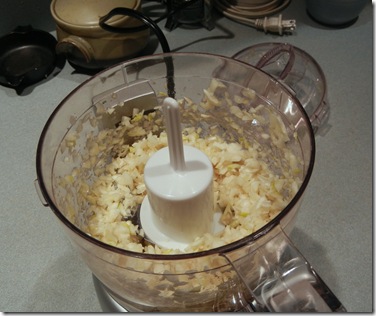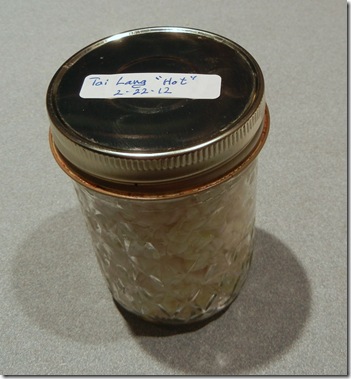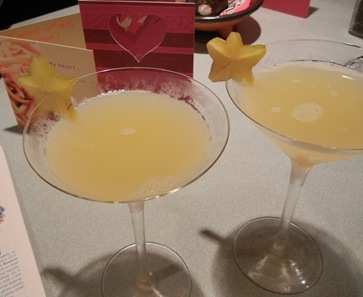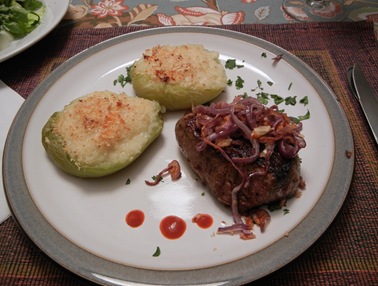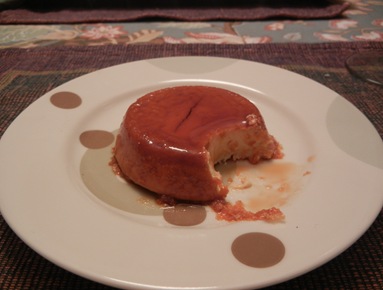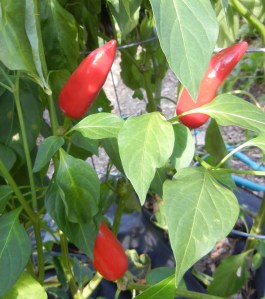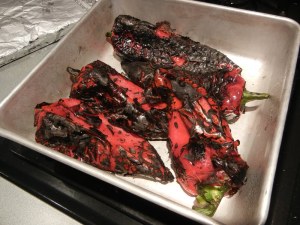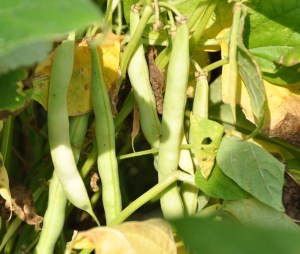When no specific dinner plan is in mind and the time to dine draws near, a familiar phrase is uttered in our kitchen–“Tapas Night!” Tapas Night is our cop-out excuse for throwing together leftovers on little plates. No, wait, I take take that back. At one time that might have been true, but I dare say the co-conspirator and I have evolved as cooks and, frankly, Tapas Night has become an opportunity to try out new tastes and small bites from whatever the fridge, pantry and garden present us. Tonight’s was no New Year’s Eve, but it was still pretty special.
After work I went up to the garden to take care of a few things and brought home a bit of the produce. When I got home we talked about dinner, a dish I had an idea for, and the fact that we really didn’t have much of a plan beyond that. Activate Tapas Night. Sorry about the pictures, though. I was more into cooking than paying attention to lighting so most of these suck. I’m not a food stylist so if you have any suggestions on the light and color problems I’d be more than glad to hear them.
The dish I had planned on making was a chilled fava bean and pea soup inspired by our visit last weekend to Nostrano. My recipe was not much like theirs, but I think it showcased the flavor of the legumes. I started with the beans I had previously shelled plus the ones I picked tonight by giving them a long blanch in salted water. They then popped easily out of their skins and into a mason jar.

“Why a mason jar?” you may ask. I shall tell you. We learned recently that the base doohicky on our blender is threaded to match such jars and so is handy for making small batches of things like salad dressings and soups. Cool!


The favas were pureed with some peas (some from the garden, some from the freezer), mint, yogurt, salt and water. The result was delicious! The bean flavor was at the forefront. I served it in my grandmother’s coffee cups. More on those at a later date.

Meanwhile, on another stretch of the kitchen counter the co-conspirator was whipping up something with little potatoes left over from the Fourth’s potato salad and some cherry tomatoes from the Westside Community Market.
The par-boiled taters were given a quick roast in the toaster oven…

…while a tomato sauce was simmering on the stove.

The sauce (based on a recipe in The New Spanish Table) had a nice smoky note from the smoked paprika. We could have used some more potatoes!
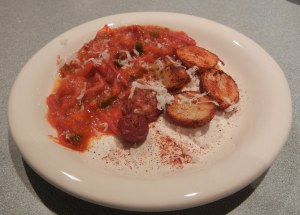
Meanwhile, some less-than-baby carrots were waiting. After pruning and tying up the tomatoes, picking the favas and watering the cukes, I thinned the carrots–a task I’d forgotten to do for too long. Consequently I had a handful of carrots that were too big to throw away and just right for a simple small plate creation.

I lightly steamed them with some fresh chervil I’d picked on the outside chance we’d need it for dinner. Incidentally, I steamed them with some of the already hot water I’d used to blanch the fava beans. It had turned red! What’s up with that?

Served with a pinch of sea salt smoked over Welsh oak, they were delicious. The marked difference in flavor between the orange carrots and the yellow carrots made me wonder why anyone would bother to grow the latter, which were part of a gimmicky “rainbow carrots” seed blend.

Meanwhile the zenith of our Tapas Night feast was being prepared on the sidelines. Half of our sweet basil plants have decided to be anemic, pathetic wastes of chlorophyll. The rest, on the other hand, are growing like kudzu and threatening to flower. I reined them in by harvesting a respectable number of stems this evening. Call us unimaginative, but pesto is the first thing that came to mind.

But what to pair it with? Pasta was suggested but quickly abandoned. Why not just sauce it on some sauteed shrimp? OK. Sounds good. Better than good.

The result was a perfect blend of the sweet seafoodiness of the shrimp and the savory, herbal contribution of the basil.

Now that we’re in what I like to call “High Summer” here I’m looking forward to more spontaneous, experimental cooking events. The volume and variety of fresh ingredients that are available now is inspiring. Sometimes we like to put together a more normal main dish/side dish/salad dinner and that’s fine. But when we’ve got the time, energy, ingredients and ideas it’s way fun to just go with what we’ve got and savor the results.

